Natural Language Processing (NLP) has transformed the way machines interact with and understand human language, unveiling huge opportunities in enterprises. From automatic help desks to sentiment analysis, the applications of NLP are too many. But, in order for NLP systems to produce accurate, sortable data, best practices will have to be maintained nlp-wise for sortable data.This blog will explain all about NLP Best Practices for Analyzable Data. Implementing NLP Best Practices for Analyzable Data helps ensure that text processing leads to reliable and interpretable outcomes.

In this blog, we will be discussing the key concepts, methodologies, and tools that help you achieve NLP best practices, NLP Best Practices for Analyzable Data. Now you have a useful method for mining meaningful insights from text data.
Why NLP Best Practices?
Best practice Best practice is essential in order to generate data that can be analyzed and which produces actionable insights. NLP Best Practices for Analyzable Data. Ineffective data lead to models that aren’t good enough, as well as wasted resources and results that are biased. One effective approach to ensure meaningful insights from language models is by following NLP Best Practices for Analyzable Data, which include proper text cleaning, tokenization, and data normalization. You can, by implementing best practices
- Improve data quality.
- Enhance model accuracy.
- Minimize biases in results.
- Reduce computational costs.
If you are a data scientist, researcher or business developer – knowing the best practices of NLP will be the key to your success.

XML Structure for Analyzable Data
Before getting into best practices, it’s also worth thinking about what makes data analyzable. Ideal text data should be:
- Clean: Free from unnecessary pollution that can detract from readability such as typos, extraneous information, or inconsistency.
- Structured: Arranged in a manner that is conducive to rapid interpretation and easy handling.
- Representative: Even and varied to guard against bias.
- Source: To keep the meaning and context of the given text.
These ingredients make a rock-steady base for NLP operations.
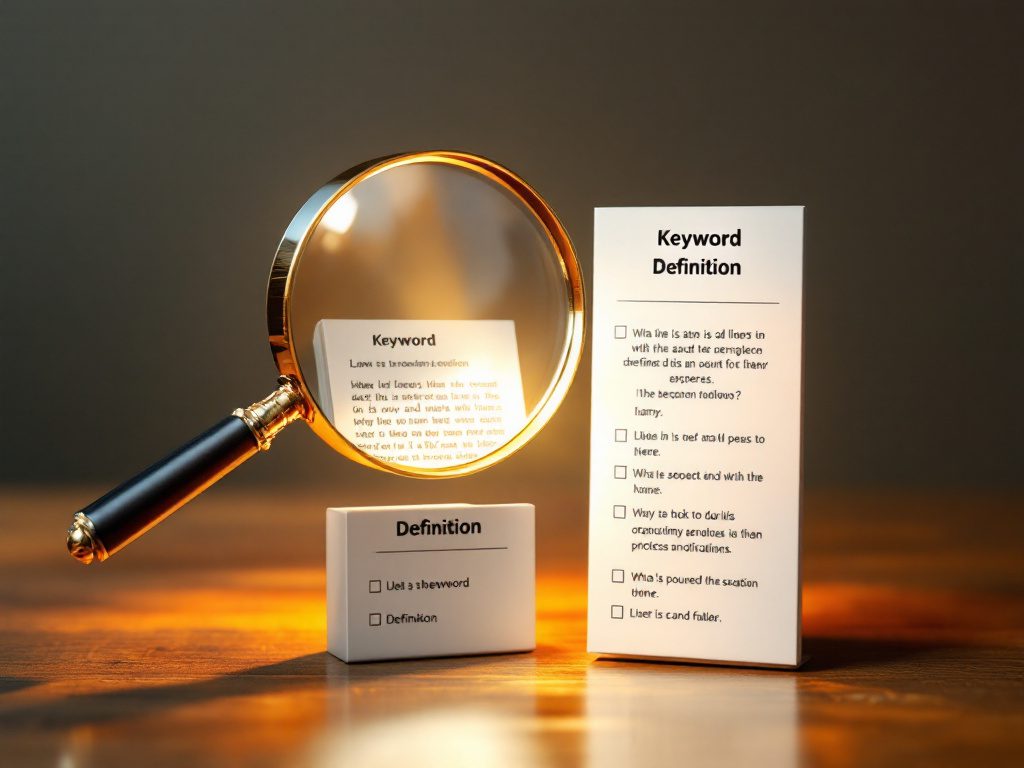
Best Practices in NLP with Annotatable Data
Data preprocessing: the base of NLP
Preparation of data is one of the most important steps in NLP. It also guarantees that raw text data is converted into a ready-to-use condition. The following methods are necessary:
a) Tokenization
- Separate text into the words or sentences.
- Leverage libraries such as NLTK, SpaCy or Hugging Face for tokenization.
b) Text Normalization
- Convert text to lowercase.
- Strip out punctuation, special characters, and whitespace.
c) Stopword Removal
- Drop stop words (like ”the”, “and”, “is”), that do not have useful meaning.
d) Lemmatization and Stemming
- Stem words ( remove endings to roots ) (running → run).

Feature Representation: Text Encoding for Analysis
Data Representation: Feature Extraction Once data has been preprocessed, the next step is to convert data into an appropriate form for processing, which is feature extraction. Key techniques include:
a) Bag of Words (BoW)
- Represent the text as a word frequency vector.
- Good for basic classification problems.
b)TF-IDF ِ(Term Frequency-Inverse Document Frequency)
- Assign weight to words based on how important they are in a document with respect to the full corpus.
- Great for finding the most search relevant keywords.
c) Word Embeddings
- Leverage advanced methods such as Word2Vec, GloVe, BERT to represent semantics.
- Be able to capture the meaning of the words with context.
d) Sentence Embeddings
- Encode whole sentences with models like Sentence-BERT for tasks that require looking at the similarity of sentences.

Data Curating: Balancing and Labelling the Dataset
a) Data Balancing
- Make sure your dataset is balanced and that you do not skew it.
- Use some kind of balancing technique, oversampling or undersampling.
b) Annotation and Labeling
- Be willing to spend on good labels for supervised learning.
- Leverage tools, such as Prodigy or Label Studio to make annotation more efficient.
c) Data Augmentation
- Data augmentation via generation of synthetic data, particularly for low resource languages.
Handling Noise and Ambiguity
Text data in the real world is often noisy and ambiguous. Address these issues by:
- Spell Correction: can be utilized libraries such as PySpellChecker.
- Synonym Replacement: When terms are unclear, replace them with clearer synonyms.
- Context Analysis: Utilize context-sensitive models such as GPT or BERT.
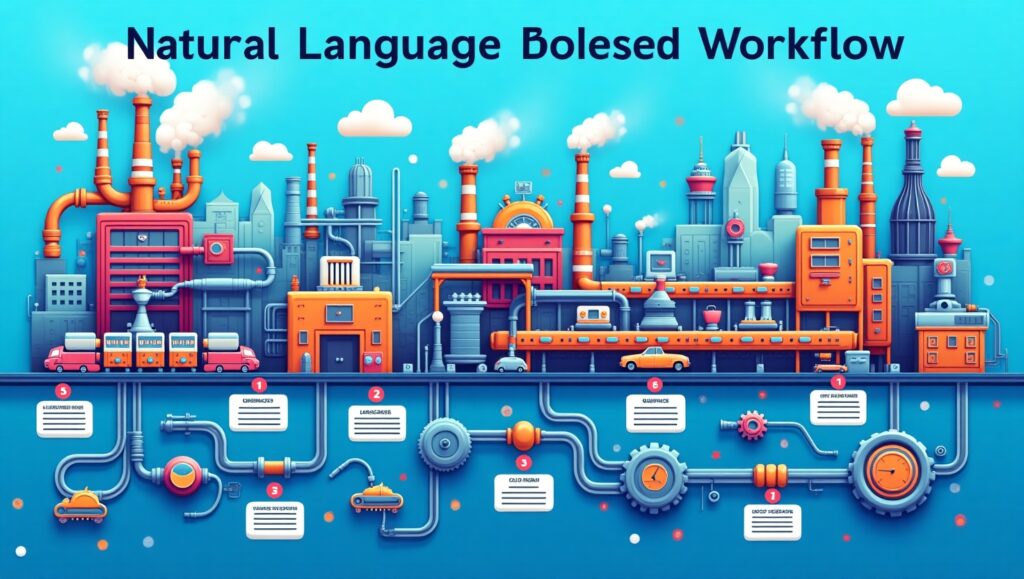
Ethical Considerations in NLP
Ethics are critical in NLP and they help to guarantee that systems built are fair and neutral. Best practices include:
a) De-biasing Detection and Tracking Model
- Examine datasets for gender, racial or cultural biases.
- Infect models with considerations on fairness.
b) Ensuring Data Privacy
- Mask sensitive data for regulations such as GDPR.
c) Transparency & Explainability
- Use models with clear and interpretable results so that stakeholders can understand them.
Leveraging Advanced NLP Tools
There are a lot of advanced tools and frameworks that make following best practices easier:
- SpaCy: used for tokenization, Dependency parsing and Entity recognition.
- Hugging Face Transformers: For pre-trained transformer models, such as BERT, GPT, and RoBERTa.
- NLTK: An old school library for fundamental NLP tasks.
- Stanford NLP: Provides a robust tool for natural language understanding.
These tools implement built-in features for several best practices by which development effort and time is reduced.

Obstacles and How to Crush Them
Despite the best efforts, and best practices, there are common difficulties experienced with NLP projects:
Data Scarcity:
- Basically use transfer learning from pre-trained models.
- Investigate multilingual datasets for wider generalization.
High Dimensionality:
- Use dimensionality reduction such as PCA or t-SNE.
Model Interpretability:
- It can help researchers and practitioners understand how models process language and provide intuitions.
- It contributes to the advancement of the transparent and accountable NLP systems, by uncovering the impact that specific words, phrases or linguistic patterns have on the model’s prediction.
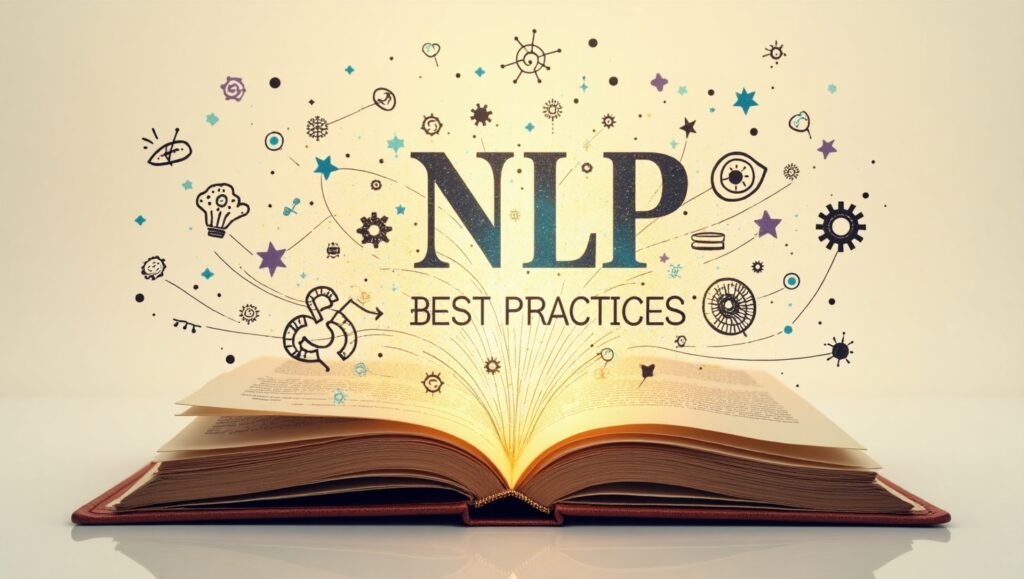
Future Directions of NLP Best Practice
The NLP field is rapidly changing with lots of promising changes ahead:
- Few-Shot and Zero-Shot Learning: Models such as GPT-4 are pushing NLP with less labeled data.
- Multimodal: A mix of text, images, audio, and video to give you more.
- Responsible AI: We are going to see an increased focus on ethically built AI.
- Keeping abreast of these trends is a “must” for remaining ahead of the game in NLP.
NLP Tools and Resources
The use of the appropriate tools and resources can facilitate NLP tasks and lead to better results. Here’s a nutshell of a collection of useful tools and resources for NLP:
a) Text Processing Libraries
- NLTK (Natural Language Toolkit): a toolkit that has everything a beginner needs.
- SpaCy: A strong library for industrial-strength NLP work, such as dependency parsing and named entity recognition.
- Stanford NLP: Known for its syntactic and semantic analysis accuracy.

b) Pretrained Language Models
- Hugging Face Transformers: Interoperable with state-of-the-art models such as GPT, BERT, and RoBERTa.
- OpenAI GPT Models: Perfect for tool for text and semantic analysis.
- Google’s T5 and BERT: Commonly used for things such as summarization, translation and question answering.
c) Data Annotation Tools
- Prodigy: Procedures for producing records and drawing interest from the general public describes Prodigy the prompt and interactive code labelling of text.
- Label Studio: It’s open-source and flexible, ideal for generating labeled data sets for supervised learning.
- LightTag: For managing collaborative text annotation efforts.
d) Sentiment Analysis & Topic Modeling
- TextBlob: Makes text processing easy for sentiment analysis and subjectivity analysis.
- Gensim: Created specifically for topic modeling and document similarity with algorithms such as LDA (Latent Dirichlet Allocation).
e) Cloud-Based NLP Platforms
- Google Cloud Natural Language API: Features include entity recognition, sentiment analysis, and syntax analysis.
- Microsoft Azure Text Analytics: Gives you language detection, sentiment analysis, and key phrase extraction.
- Amazon Comprehend: Identifies the formation of text with pre-trained machine learning.

f) NLP Learning Resources
- Fast. ai: Has free courses and guides for those interested in NLP.
- Kaggle Datasets and Competitions: Great place to find datasets and tasks for NLP.
- Papers with Code: Follows the state of NLP research with implementations.
These are the tools and resources for creating compelling and efficient NLP pipelines. Using them in your projects you can boost the quality and productivity of your NLP systems.
Online Courses
a) Natural Language Processing Specialization (Coursera)
- Teachers: Provided by DeepLearning. AI and Stanford.
- Subjects: Includes NLP basics, such as sentiment analysis, machine translation, and speech recognition.
- Requirements: Fundamental knowledge of Python and some machine learning.
You can access the Natural Language Processing Specialization by DeepLearning.AI on Coursera here:
👉 Natural Language Processing Specialization – Coursera
b) Hugging Face Course
- Provider: Hugging Face.
- Subjects: We were interested to use our \texttt{transformers} library for NLP tasks such as fine-tuning models and feature extraction.
- Best For: Anyone looking to get hands-on with the latest-and-greatest NLP tools.
You can access the Natural Language Processing Course by Hugging Face at the following link:

c) Fast.ai NLP Course
- Provider: Fast.ai..
- Agenda: Practical NLP techniques w/ emphasis on deep learning & modern libraries.
- Special feature: Explains difficult subjects for the beginning student.
You can access the Fast.ai Natural Language Processing (NLP) Course here:
d) Udemy Courses on NLP
- Example: “Natural Language Processing with Python” and “Deep Learning NLP: Proven Techniques.”
- Flexibility: Learn at your own pace and access the course at any time and place.
The Complete Natural Language Processing Course by Lucas Bazilio
Free Tutorials
a) Google Cloud AI Tutorials
- Highlights: Workshops on sentiment analysis, entity recognition and more with Google’s NLP API.
- Resources: Large number of instructions and exercises.
You can access the Google Cloud AI Tutorials through the Vertex AI documentation:

b) Hugging Face Blog & Tutorials
- Featured threads: A collection of walkthrough on training transformers, building chatbots and using BERT in production.
- Readership: Professionals and researchers.
Stay updated with the latest advancements, tutorials, and community stories in AI and machine learning:
c) Kaggle Notebooks
- Pros: Free datasets and code to experiment with NLP techniques.
- Ideal For: Anyone that wants hands-on, project-based learning.
You can explore Kaggle Notebooks at the following link:
Books for Reference
These books provide deeper theoretical grounding, and are highly recommended:
- Speech and Language Processing by Daniel Jurafsky & James H. Martin.
- Natural Language Processing with PyTorch by Delip Rao and Brian McMahan.

YouTube Channels
- StatQuest with Josh Starmer : Breaks down NLP principles for newbies.
- Machine Learning Mastery: Tutorials on NLP-related techniques.
- The Hugging Face YouTube Channel: What are the latest developments in NLP and how can we take advantage of those?
NLP use cases by industry
Healthcare
- Medical Records Analysis: NLP is also used to retrieve meaningful information from the unstructured records of patients.
- Drug Discovery: It speeds the research process by analyzing scientific literature and homing in on potential drug targets.
- Patient Engagement: NLP-based chatbots answer medical questions and help with booking appointments.
Customer Service
- Automated Assistance: Chatbots and virtual assistants that rely on NLP are used to take simple questions, taking some load off human agents.
- Sentiment Analysis: Gain insight into customer sentiments by analyzing reviews and feedback.
- Customization: Provide customized recommendations and interactions to fit the customer experience.

Marketing and E-commerce
- NLP Targets Audience Analysis: NLP takes look at what’s developing on social media and how people are reacting – all to perfect the next targeted marketing campaign.
- Content Production: Auto-text production for product descriptions, SEOs, and advertising.
- Search Optimization: NLP improves search capabilities by searching semantically and ensures ease in product discovery.
Finance
- Fraud Prevention: Use of textual patterns from transaction data to track down fraudulent behaviour.
- Market Predictions: Using NLP to parse news, reports and social media sentiment to predict stock trends.
- Customer Service: Bank virtual assistants enhance the customer experience as they respond to customer inquiries.
Education
- Adaptive Learning: Through NLP, it can provide students with personal feedback on their performance, and tailor the content based on their learning styles.
- Language Translation : support multilingual teaching even if students whose native language is not English.
- Grading Exams: Machine graders level writing assignments for quick assessment.
Law and Legal Services
- Contract Analysis: Extract clauses and Spot risks from large legal documents.
- Case Summarization: NLP tools summarize court cases and legal precedents to speed up research.
- E-discovery: Processing of millions of text documents in litigation.

Entertainment
- Content recommendation: Services like Netflix leverage NLP to recommend personalized movies and TV shows.
- Script Writing: Automating some process of script creation for narrative storytelling.
- Listening To Your Social Circles: NLP monitors trends and conversations in real-time.
HR and Recruitment
- Resume screening: NLP screens resumes to determine whether potential candidates met the job requisites.
- Sentiment Analysis: Keep a pulse on employee satisfaction with survey and feedback mechanisms.
- Diversity & Inclusion: NLP uncovers bias in job postings for inclusive language.
Manufacturing
- QC: Study customer’s reviews and complaints quality treatment.
- Supply Chain Optimization: Leverage NLP for logistics planning and communication.
- Predictive Maintenance: Analyze machine logs and personnel notes.
Govt and Public Admin Issues
- Policy Analysis: NLP analyzes legislation, policy documents, public commentary to infer decisions.
- Engaged Citizenship: AI-powered platforms foster better interaction between the citizen and the governing authorities.
- Disaster Management: Real-time information extraction on social media during emergencies.
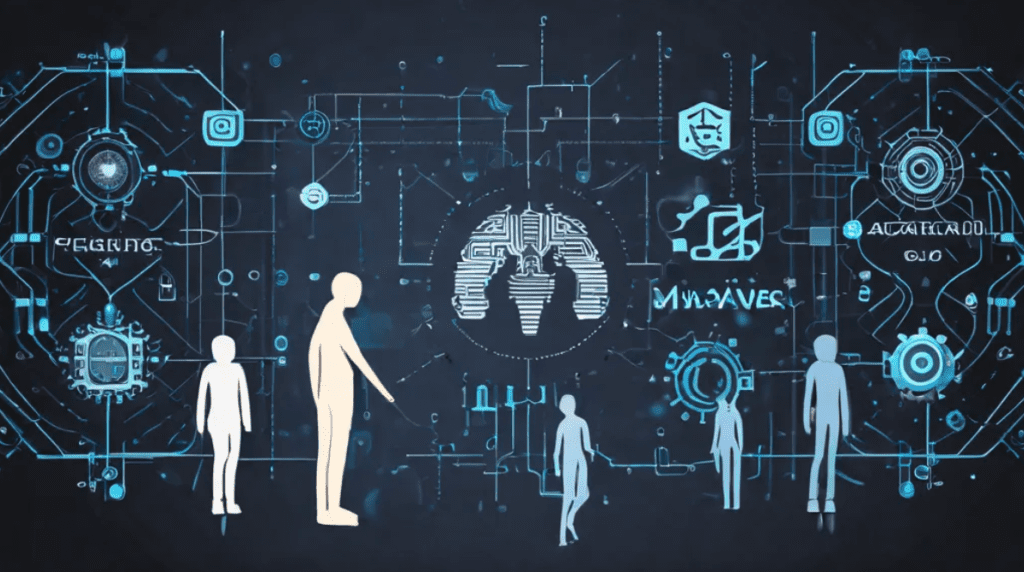
Conclusion
The first challenge to successful NLP projects today is nlp best practices and data that is analyzable. With attention paid to preprocessing, feature extraction, data cleaning and ethical considerations, you can make sure that you have high-quality data that drives accurate results. In addition, with all these tools and newer trends the possibilities are endless with how you want to work with NLP. NLP Best Practices for Analyzable Data.
If you spend some time internalizing these practices it will not only improve the efficiency of your NLP workflows, but also the ethics and impact of your natural language processing applications. Begin using these practices today and let them to skyrocket your NLP projects.
Also read about Explore the Natural Language Toolkit (NLTK) — a leading platform for building Python programs to work with human language data.
Also read about The Future of AI in Middle East
FAQs
What Is Natural Language Processing (NLP)?
NLP is a subdiscipline of artificial intelligence and a part of computer science that focuses on the interaction between computers and humans. It requires a combination of text analysis, speech recognition and translation.
What makes NLP so relevant in every domain?
NLP is the automation of language-related tasks (e.g., customer feedback, fraud detection, etc., and so on, and so forth). It improves productivity, lowers costs, and uncovers information contained in unstructured text.
What are the common problems in NLP?
Some key challneges include noise, bias, interpretability and high-dimentionality.
How to create NLP scripts for analysible data.arrange.opp What is best practice?
Best practices involve integrating the pre-processing of text data (e.g., tokenization, normalization), selecting robust feature extraction techniques such as word embeddings, and controlled, balanced, high-quality datasets.
What sectors do NLP applications most benefit?
Verticals in healthcare, finance, e-commerce, marketing, education, customer service and legal industries all realize the undeniable value of automation and improved analytics.
What are the popular NLP tools?
The most popular ones are SpaCy, NLTK, Hugging Face Transformers and cloud platforms including Google Cloud Natural Language API and Amazon Comprehend.
What are ethical implications in NLP?
There are ethical considerations such as remember to keep privacy of the data where you are using, removing the bias in your data set if any, making sure the model is interpretable and follow the law such as GDPR.
What are the upcoming trends in NLP?
New trends include few-shot and zero-shot learning, multimodal NLP (where text is combined with other data types like images), and greater attention to responsible AI practices.


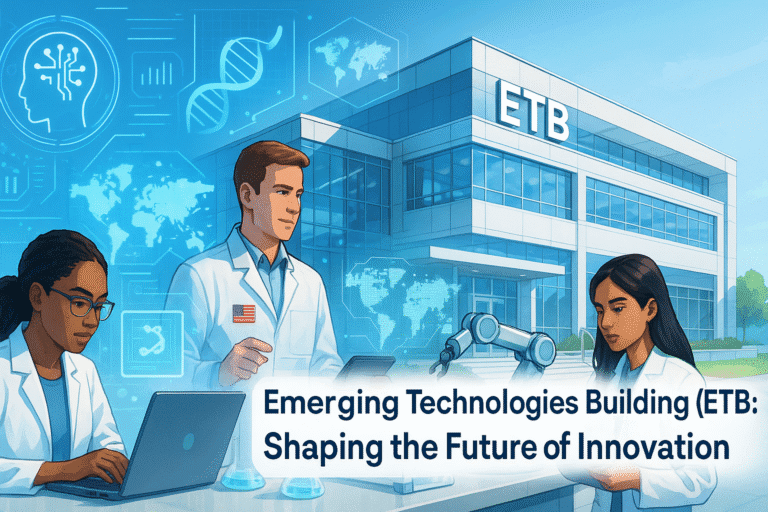






OFFICIAL LIVE CASINO CHANNEL: Топ проверенных площадок?? Актуальные рабочие зеркала?? Бонусы до 300%?? Стратегии для рулетки, блэкджека и Crazy Time. ЭКСКЛЮЗИВНЫЕ ПРОМОКОДЫ. Регистрируйся, играй и моментально выводи выигрыши!
https://t.me/s/iGaming_live/3410
r6k90g
ПОДПИСЫВАЙСЯ! В канале:
• Только лицензированные LIVE-казино
• Рабочие зеркала 24/7
• Анализ стратегий для рулетки/блэкджека
• ПРОМОКОДЫ с фриспинами
Регистрируйся > Играй в live-дилеров > Выводи BTC!
Выбери свою игру: https://t.me/s/Best_promocode_rus лучший активный канал казино Telegram
Твои ответы начинаются здесь:
https://t.me/s/Best_promocode_rus/790
[url=https://t.me/s/Best_promocode_rus/150]SOL скачать приложение[/url]
[url=https://t.me/s/Best_promocode_rus/760]Промокод на удвоение лимита депозита в IRWIN[/url]
[url=https://t.me/s/Best_promocode_rus/790]Golden Crown стабильное соединение[/url]
[url=https://t.me/s/Best_promocode_rus/370]Гарантированный выигрыш для новичков в Golden Crown[/url]
https://t.me/s/Best_promocode_rus/440
Добро пожаловать в ОФИЦИАЛЬНЫЙ КАНАЛ! Здесь только проверенные live-казино с лицензиями. Актуальные зеркала, бонусы 500% и стратегии для:
• American Roulette
• Lightning Blackjack
• Cash or Crash
Промокоды для УСИЛЕННОГО СТАРТА! Играй и выводи!
Выбери свою игру: https://t.me/s/Best_promocode_rus лучший активный канал казино Telegram
Твои ответы начинаются здесь:
https://t.me/s/Best_promocode_rus/940
https://t.me/s/Best_promocode_rus/870
[url=https://t.me/s/Best_promocode_rus/370]Гарантированный выигрыш для новичков в Golden Crown[/url]
https://t.me/s/Best_promocode_rus/90
[url=https://t.me/s/Best_promocode_rus/660]Snatch Casino реферальная программа[/url]
[url=https://t.me/s/Best_promocode_rus/370]Гарантированный выигрыш для новичков в Golden Crown[/url]
A powerful share, I just given this onto a colleague who was doing a little bit analysis on this. And he in reality bought me breakfast because I found it for him.. smile. So let me reword that: Thnx for the treat! But yeah Thnkx for spending the time to discuss this, I really feel strongly about it and love reading more on this topic. If potential, as you become expertise, would you thoughts updating your weblog with extra details? It is extremely helpful for me. Big thumb up for this blog submit!
cjkip8
8fh9xh
1ba6xg